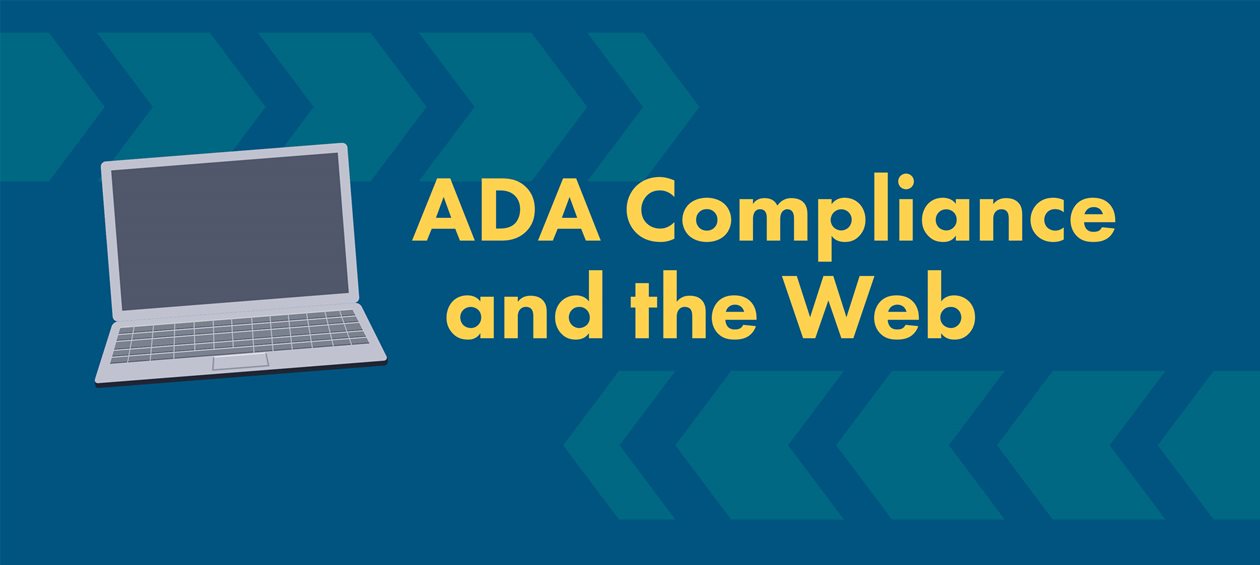Recently, requirements set in the Americans with Disabilities Act (ADA) related to access to buildings and physical locations have begun to be applied to websites. Companies working to comply with these requirements must often navigate a frustrating maze of conflicting information and confusing terminology.
The following information, while not legal guidance, is intended to assist our members in making sure your website is accessible to everyone.
Recently, requirements set in the Americans with Disabilities Act (ADA) related to access to buildings and physical locations have begun to be applied to websites. Companies working to comply with these requirements must often navigate a frustrating maze of conflicting information and confusing terminology.
The following information, while not legal guidance, is intended to assist you as an ARVC member to help make sure your website is accessible to everyone.
What is the ADA?
The purpose of the ADA is to make sure that people with disabilities have the same rights and opportunities as everyone else. It guarantees equal opportunity in public accommodations, employment, transportation, state and local government services and telecommunications.
Why Businesses Should Consider Website Accessibility
Even without the legal obligation to do so, building accessible features into websites is a good business practice. Accessibility makes websites easier to use for everyone, not just users with disabilities, and may attract more customers to your website. Implementing accessibility features isn’t a difficult task for web designers and is not likely to alter the appearance and layout of your website.
How does the ADA apply to websites?
Just as poorly-designed buildings can prevent people with disabilities from entering, websites that lack accessibility features can create unnecessary barriers to information and services. Access problems often occur because website designers mistakenly assume that everyone can see and access a webpage in the same way.
This can frustrate assistive technologies such as screen readers, text enlargement software and programs that enable people to control the computer with their voice. Accessible website design recognizes these differences and does not require people to see, hear or use a standard mouse in order to access the information and services provided.
What are the guidelines?
The most detailed best practices were established by the World Wide Web Consortium (W3) as the Web Content Accessibility Guidelines (WCAG). The WCAG established a set of requirements for digital applications like websites and emails. For each guideline, there are three levels of testable success criteria: A, AA, and AAA. For most RV parks and campgrounds, the goal should be WCAG 2.1 AA.
Six things you can do to get started on making your website more accessible
1. Add an “alternative text” tag to images.
Many customers who are vision impaired use tools called screen readers to read your website. However, when these readers reach images, they generally can’t describe them. That’s where the alternative text tag comes in. Often called an “alt tag,” this descriptive text can be understood by the reader tool and spoken to the site visitor. Many of the most popular website content management tools include a field for adding an alt tag which make this a very easy upgrade.
2. Post documents in text-based formats.
PDF documents are a great way to post information to your websites. However, many assistive tools like screen readers can’t decipher PDFs. It’s a good idea to post text-based versions of your documents in addition to a PDF. A simple HTML webpage or a Rich Text Format (RTF) document will meet this requirement.
3. Minimize distracting elements.
If you have a video or an automated scrolling display that blinks or flashes, consider adjusting it for customers who may have issues with such things. Slowing down the transitions, limiting or eliminating flashing graphics and including tools to pause or stop the videos and slide shows are good practices. It’s also advisable to provide static copies of pages that automatically refresh.
4. Add tags to your forms.
If your site uses online forms, be sure to include descriptive HTML tags. These provide the information visitors with disabilities may need to complete and submit the forms. Most of the popular form-building tools include description fields making this another easy update.
5. Add audio descriptions and captions to your videos.
Videos can be tricky because hearing impaired people may be able to see–but not hear–your video, while for many people with visual disabilities, the opposite is true. Be sure to provide audio descriptions of images and provide text captions.
6. Include an accessibility statement on your website.
A website accessibility statement is a message to your visitors about your commitment to making your website content accessible to everyone. Specifically, it’s often a single page on your website outlining the policies, goals and current methods on making your website content and services accessible to people with disabilities, including visual, auditory, physical, speech, cognitive, language, learning and neurological disabilities. The lack of an accessibility statement is often the first thing a plaintiff’s lawyer will look for when deciding who to sue for discrimination and non-compliance with the Americans with Disabilities Act (ADA) regulations.
Need more information? Below are some helpful links on best practices and guidelines for making your website ADA compliant:
ADA Best Practices Tool Kit – U.S. Department of Justice
How to Meet WCAG – World Wide Web Consortium
Developing an Accessibility Statement: https://www.w3.org/WAI/planning/statements/
UserWay Website Accessibility Widget
WAVE Web Accessibility Evaluation Tool: http://wave.webaim.org/






Leave A Comment